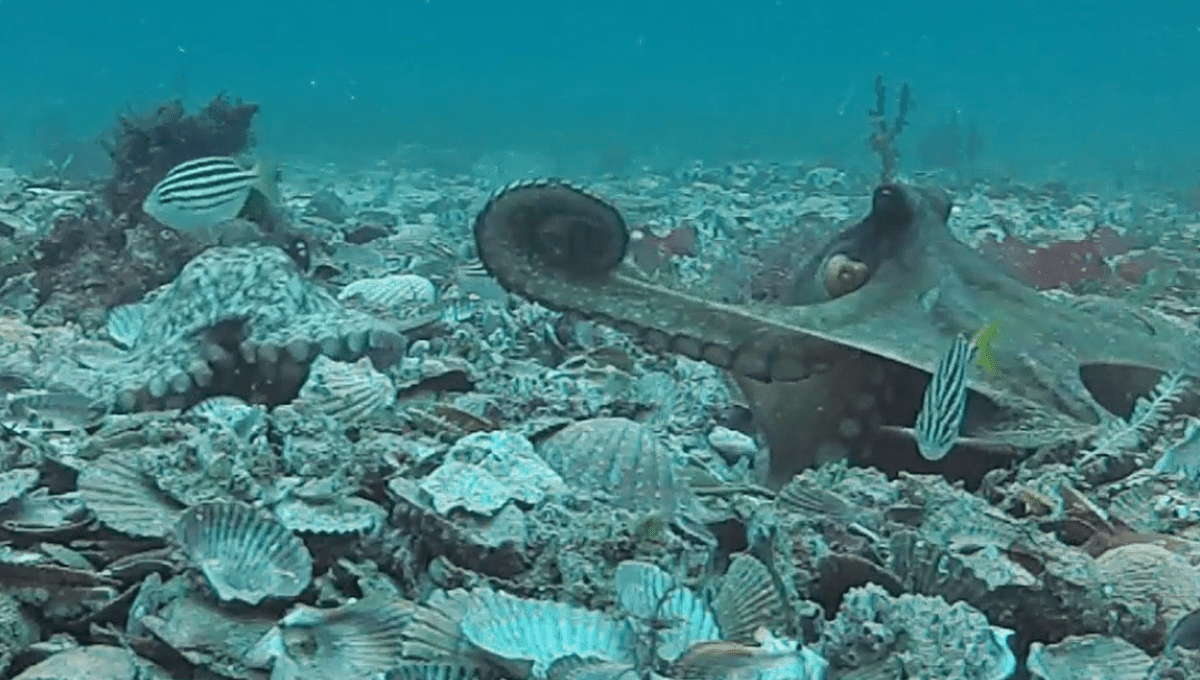
Jervis Bay, Australia, might just hold the world’s most moody octopuses. Wild gloomy octopuses (Octopus tetricus) in this area frequently hurl silt, shells, and algae through the water using their arms by creating a water jet from their siphon under their arm web. This throwing behavior is sometimes aimed at other individuals, with the material often finding its target. Throws with lots of oomph behind them were usually associated with color-shifting octopuses which had turned darker, an indicator of aggression.
Octopuses are pretty antisocial to begin with, hunting alone and even cannibalizing each other on occasion. While they use their arms to full advantage – using them to mimic seaweed in prey capture or manipulate objects as shelter – targeted throwing in the animal kingdom is seen in only a few species including dolphins and chimps.
Through studying 24 hours of video footage from 2015 and 2016, the team observed 102 instances of octopus throws. A throw was classified as a hit if another octopus interrupted the motion of the thrown materials. Behavior was observed whereby an octopus would gather materials in its arms, hold it using its arms and web, and then use its siphon to push the material through the water. Because of the change of position of the siphon, the throwing behavior was judged to be deliberate.
“Wild octopuses project various kinds of material through the water in jet-propelled ‘throws,’ and these throws sometimes hit other octopuses. There is some evidence that some of these throws that hit others are targeted, and play a social role.” say the authors in a statement.
Hits in many cases were accompanied by displays of mild aggression such as arm probes and grappling. The victim of the hit was observed to change their behavior, either ducking or changing their movements. The team did not observe any retaliatory acts where an octopus threw something back at the original thrower, nor did they see a successful hit escalate into a full fight.
While octopuses threw shells while den cleaning, these throws were observed to have significantly less vigor than throws that were made in an interactive setting with another octopus. Interactive throws occurred in around half the throws recorded and 66 percent of the throws were made by female octopuses. Darker colors in octopuses are more usually associated with aggression and dark-colored individuals were more likely to throw with more force and hit another octopus.
The paper is published in PLOS ONE.
Source Link: Gloomy Octopuses Caught Flinging Shells and Silt At Each Other For First Time